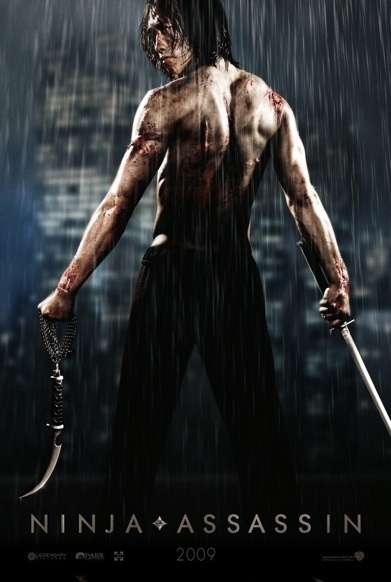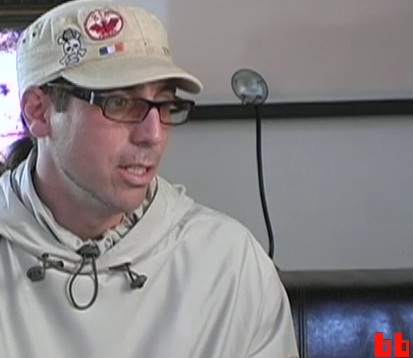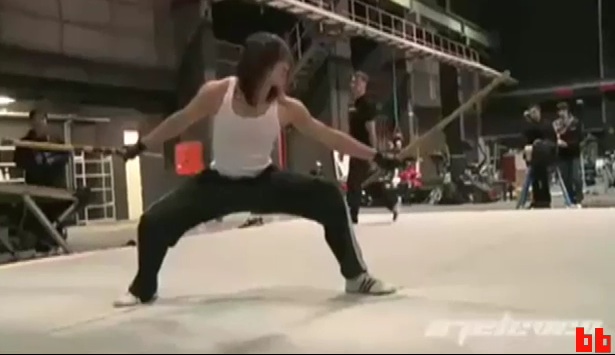The Latest from Boing Boing |  |
| Posted: 08 May 2009 03:49 AM PDT Rob Weir writes in Inside Higher Ed on how to conduct a lecture that your students will actually pay attention to. Good advice -- I like this quote: "It's better to say a lot about a little than a little about a lot." A time-tested way of engaging students is using a hook. Unveil a teaser, pose a question, tell a story, be provocative, invite brief brainstorming... any adult equivalent of "Once upon a time ...." Frontloading wonderment helps keep an audience. For instance, when I want students in my Civil War class to consider a stated objective about the link between ideology and historical memory I show a slide of King George III, George Washington, Benedict Arnold, Jefferson Davis, Abraham Lincoln, and Robert E. Lee. I ask, "Which figures can we pair and why?" For a lecture on the economics of the Salem witchcraft trial I hold up a shard of imported 17th century pottery and tell students, "This little scrap of crockery contributed to the death of 19 people in 1692."Boring Within or Simply Boring? (via Kottke) |
| Posted: 08 May 2009 03:47 AM PDT Back in 2008, Space.com covered Celestis's plan to expand their shoot-your-remains-into-space program to include sending a vial of your ashes to the Moon. The article says that the service will be available in 09, but Celestis's website currently says that the it won't "launch" until 2011. Fly Me to the Moon ... Forever Celestis Memorial Spaceflights (via Monochrom) |
| Now Slower With More Bugs stickers are good for organic produce, software boxes Posted: 08 May 2009 03:40 AM PDT Evil Mad Scientist Labs wants you to proudly label your organic garden with these handsome "Now Slower and with More Bugs!" stickers, originally produced to adorn software products: Stickers for the Organic Gardener (Photos by Lorien Tersey ) |
| Chinese provincial government orders local officials to smoke more Posted: 08 May 2009 03:37 AM PDT Provincial officials in Hubei, China have sent down orders to government employees demanding that they consume 230,000 packs of locally produced cigarettes in order to boost tax revenues from coffin-nail factories in the region. In total, officials have been ordered to puff their way through 230,000 packs of Hubei-branded cigarettes worth £400,000...Chinese ordered to smoke more to boost economy (via We Make Money Not Art) |
| San Francisco Muni begins to enforce imaginary no-photos policy Posted: 07 May 2009 06:45 PM PDT The blogger at What I'm Seeing is a prolific photographer of San Francisco's rapid transit system, and thus has fallen afoul of its imaginary no-photos policy, with a threatened arrest: What Is Muni's Photography Policy?? (Thanks, Ted!) |
| Keni Lee Burgess plays "Baby Please Don't Go" on his cigar box guitar Posted: 07 May 2009 05:27 PM PDT Keni Lee Burgess plays Muddy Water's "Baby Please Don't Go" on his cigar box guitar. And here's Burgess' MySpace page with streaming music. (Via Cigar Box Nation) Previously:
|
| Summer internships at the Free Software Foundation Posted: 07 May 2009 04:33 PM PDT John from the Free Software Foundation sez, "The Free Software Foundation announced a new internship program today, and is looking for interested students to apply by May 25. A wide variety of focus areas are possible, from campaign and community organizing (like DefectiveByDesign.org and LibrePlanet.org) to helping with free software licensing issues, and of course programming. We're really excited about being able to offer these positions and work with bright students interested in free software." Intern at the FSF (Thanks, John!) |
| Spock dancing to The Jacksons: 1984 video Posted: 07 May 2009 03:25 PM PDT |
| An Alien Robot's Cookbook: Recipes from Earth Posted: 07 May 2009 06:11 PM PDT  Ruth Fankushen Kunkel (who ran a restaurant called the Delta of Venus Coffeehouse and Pub) says An Alien Robot's Cookbook: Recipes from Earth "began as a journey to find something that my son Gabriel would eat besides pizza, hot dogs, and cereal." Her son provided the fun illustrations that accompany the recipes for dishes like "Big Bang Breakfast Potatoes," "Apple Robocakes," "Overnight French Toast," "Quasar Quiche," "Dark Star Vegan Cupcakes," and dozens of other tasty items. Science facts and alien robot lore are interspersed through the pages. As the father of two picky eaters, I'm looking forward to trying some of these recipes with my kids. An Alien Robot's Cookbook: Recipes from Earth |
| Marion Peck's "Ladies & Clowns" show Posted: 07 May 2009 03:06 PM PDT  Artist Marion Peck's "Ladies & Clowns" show opens at Sloan Fine Art in NYC on Wednesday, May 13th, from 7 to 9 pm. Exhibition runs May 13 through June 13, 2009. |
| eBay auction ends for personal genome sequencing Posted: 07 May 2009 02:29 PM PDT Someone has won an eBay auction to have their complete genome sequenced. The winning bid, and the only bid, was $68,000, the minimum set by the company Knome, Inc. The funds from the auction will go toward the Archin X Prize for Genomics, a $10 million challenge to decode 100 human genomes in 10 days. Scientific American has details on the auction, and also points to Harvard's Personal Genome Project that's seeking 100,000 volunteers. From SciAm: "We don't know who the [auction's] winner is," says Knome's Ari Kiirikki. "We know it's a male and we know he's from Europe." But as soon as the payment goes through, probably within days, the company will learn his identity, he adds, and the unknown man will join about 20 others who have had their genes sequenced by Knome."Single bidder pays $68,000 to sequence his genome on eBay" |
| The Economist Gets Something Right Posted: 07 May 2009 01:51 PM PDT Douglas Rushkoff, the author of Life Inc., is a guest blogger. Most people seem to think having written a book as stridently anti-corporate as mine qualifies me as a lefty. While I might be left-leaning, I find myself disagreeing with pro-market publications only about as often as I disagree with pro-labor or progressive ones. Pro-market advocates often forget that the corporations whose interests they're championing are actually the beneficiaries of government policies and rule sets developed to favor the activities of giant, centralized, conglomerates; they argue against regulation, when it's regulation that have built the monopolies preventing truly free commerce from taking place. Anti-market arguments, on the other hand, too often rely on the false promise of central planning or equally large institutional forces to address societal ills. They may hate corporations, but they see them as necessary employers of the masses. Or, like today's fiscal stewards, they fail to understand finance as a game with fixed rules, and their interventions as unfair to those who have come in expecting the rules they signed up for to be enforced by government, rather than rewritten. In today's Economist, however, the editors correctly dissect what is so misguided about the Obama administration's tactics in funding the automakers, particularly GM. The people who bought GM bonds over the past few years were bailing out GM's health plan for very low returns - but a high level of security. Now, as government continues to bail out the auto giant, those consumer-grade debtors are being pushed to the back of the line. They'll not only pay for GM's bailout through their bond investments, but through their taxes as well. But, as the Economist puts it, the bigger risk is to the sanctity (if we can put it that way) of the instrument formerly known as the bond: America's government, keen to protect workers, is providing taxpayers' cash to keep the lights on at both firms. But in its haste it has vilified creditors and ridden roughshod over their legitimate claims over the carmakers' assets. At a time when many businesses must raise new borrowing to survive, that is a big mistake. Bankruptcies involve dividing a shrunken pie. But not all claims are equal: some lenders provide cheaper funds to firms in return for a more secure claim over the assets should things go wrong. They rank above other stakeholders, including shareholders and employees. This principle is now being trashed.The Economist |
| Dr. Sketchy art salon comes to LA Posted: 07 May 2009 01:42 PM PDT  Bob says: Los Angeles area artists who like their life drawing mixed with theatrics, drinks and good company will be pleased to learn that Dr. Sketchy’s (the much celebrated cabaret/art salon created by artist Molly Crabapple in Brooklyn) is starting a branch in the city of angels this Sunday, May 10 at Billy Shire Fine Arts in Culver City. Fierce Couture will be showcasing latex fashions, alternative model Scar will be showcasing herself, a few lucky attendees will be showcasing their fresh breath courtesy of sweet prizes from Hint Mint, and big shots like Tim Biskup and Shag will be showcasing how neighborly they are when take up pads and pencils alongside fellow pros, students and art newbies. Get more info or RSVP Dr. Sketchy LA. |
| Lollipop multi-channel YouTube video Posted: 07 May 2009 12:32 PM PDT |
| Rubber snake harvests wave energy Posted: 07 May 2009 02:40 PM PDT Seen in the video above is Anaconda, a new system for harvesting energy from the ocean's waves. The 8-meter long, water-filled rubber "snake" is a prototype of a 200 meter version that the developers, Atkins Global, hopes will generate the energy required to power 1000 homes. The device is currently under testing in Gosport, UK and Checkmate Seaenergy hopes to bring it to market by 2014. I was surprised to learn that one of the big challenges to harvesting tidal wave energy is that the mechanical devices don't tend to last long because they get so abused by the ocean. From New Scientist: (As the Anaconda moves, it forms "bulge waves") similar to those that pass through the human circulatory system and can be felt as the pulse in the wrist and neck, says Rod Rainey of Atkins Global, co-inventor of the Anaconda. When each bulge wave reaches the end of the snake it keeps a turbine spinning to generate electricity."Sea 'snake' generates electricity with every wave" Previously: |
| A history of the Klingon Language Posted: 07 May 2009 11:02 AM PDT John Swansburg, Culture Editor for Slate, says:
|
| Tipjoy.com, a possible home for CraigBucks Posted: 07 May 2009 01:11 PM PDT Douglas Rushkoff is a guest blogger. I spent a bit of time trying to convince Craig Newmark to develop an alternative currency with me for use, initially, on Craigslist called CraigBucks. Although he (perhaps wisely) has decided that it might be better for such a thing to arise independently of Craigslist proper, that hasn't stopped me from looking at how to take everything that works so well about transparent, local currencies (specifically, those of the LETS variety), and apply them to non-local communities with shared values. The main trick is to have a currency that - unlike dollars, which are lent into existence by a bank - is instead worked into existence through an exchange. One person in the system is willing to be debited for what he gets from another. And everything stays completely transparent. Eventually (like in a file-sharing system) a person taking but not giving ends up in too much virtual debt to acquire more goods and services without finding something to do or trade with someone. Coincidentally, then, I came across TipJoy, a pretty robust little system through which people can pay each other "tips" via the net, or even Twitter. Tie the TipJoy system to an alternative currency database instead of dollars, and the system should be able to work. The more transparent it is, the more people will be able to determine just what the unit of currency is worth to everyone else. And as "Winston" suggested we call them over in a discussion at Rushkoff.com, why not call them NewMarks? |
| Trimpin: The Sound of Invention Posted: 07 May 2009 10:42 AM PDT Trimpin is a Seattle-based sound artist who creates incredibly unusual and delightful kinetic musical sculptures. The bizarre mechanical contraptions often driven by computers. For example, he's built a six-story-high xylophone in a spiral staircase, a fire organ, a MIDI-controlled toy piano ensemble, and automated wooden shoes knocking in a pool of water. Peter Esmonde, who was my editor at several places in the early 1990s, recently directed a documentary about Trimpin, titled Trimpin The Sound of Invention. I haven't seen the film yet, but it has had terrific reviews. That's no surprise to me, as Peter was always great at telling stories at the intersection of art, science, and technology. Here's the Trimpin movie site and there are more clips at Vimeo. |
| Zogby poll: 52% of Americans support legalization of pot Posted: 07 May 2009 10:24 AM PDT  A Zogby poll found that over half of American's favor the legalization of pot: Voters were asked: "Scarce law enforcement and prison resources, a desire to neutralize drug cartels and the need for new sources of revenue have resurrected the topic of legalizing marijuana. Proponents say it makes sense to tax and regulate the drug while opponents say that legalization would lead marijuana users to use other illegal drugs. Would you favor or oppose the government's effort to legalize marijuana?"Zogby Poll: Majority support legalization (Thanks Jonathan!) |
| Gun-wielding pharmacist responds to drugstore cowboy Posted: 07 May 2009 09:55 AM PDT A string of "Drugstore Cowboy-esque robberies around Seattle, Washington have prompted one pharmacist to pack a Glock. Check out the surveillance video in this news report showing him chase off a robber. (via Dose Nation) |
| BB Video: "Ninja Assassin" - John Gaeta on Hybrid Entertainment Merging Film and Games. Posted: 07 May 2009 11:09 AM PDT (Download this video: MP4, or watch on YouTube) In today's episode of Boing Boing Video (sponsored by WEPC.com, in partnership with Intel and Asus), Academy Award winning visual effects guru John Gaeta (Matrix, Speed Racer) offers a sneak peek inside his newest project, Ninja Assassin.
Due in theaters this fall, director James McTeigue's Ninja Assassin follows the story of Raizo (played by Asian mega-popstar Rain), one of the world's most deadly assassins. As Gaeta explains in this video, the movie merges blindingly badass Bruce-Lee-esque martial arts stunt work with tastefully integrated post processing work. Below, and after the jump, a partial transcription of the longer conversation we had about the future of interactivity and "hybrid entertainment" -- and why Hollywood is, in Gaeta's words, "like a mule." This interview took place during our live coverage of the 2009 Game Developers Conference, and many of the questions I pose were taken directly from our live chat audience. Xeni Jardin: John, your involvement in "Ninja Assassin" was a little different than in "Speed Racer" and the "Matrix" films, where you were the lead visual effects designer. John Gaeta: Ninja Assassin was directed by James McTeigue, who directed "V for Vendetta." It's sort of a family tradition of the Wachowskis to help James in parallel with other odd films. After "Speed Racer" was completed, we went back to Berlin and decided to make this super psycho horror ninja movie. Supremo stunts and martial arts. We're friends with the action design firm 87eleven, they've worked alongside Wu Ping for many years, after the "Matrix" Trilogy they did "Kill Bill," "300," they're fantastic. It was really their show. They were told they could be very creative and so they were. Lots of inventions! Xeni: What was your role? Gaeta: I didn't want to miss it because it seemed like it would be very fun. I was only helping out with some special unit directing, but no visual effects for me personally. "Ninja" is surprisingly invisible on effects work, and intentionally so. No virtual humans in this one. The only real post processing comes from heavily stylistic color grading, think graphic tones like "Se7en," compositing and some CG weapons and blood augmentation. But this film shines brightest for the martial arts team. To put it another way -- it's old school.There is far more going on in this movie with respect to "stunts technology" and innovation with respect to specialized and "next gen" rigs and flying machines. Xeni: You are known for visual effects in motion pictures, but every time you and I have spoken, there's this idea of hybrid entertainment that comes up. Can you tell me more about what you're doing there?  Gaeta: I'm curious about possible destinations where there's crossover with regard to simulation cinema, "sim cinema," ways of creating elaborate trapdoors and portals between different mediums. Also, over the years, there are strange subgroups from the visual world like Douglas Trumbull -- I used to work for him many years ago -- their passion went beyond cinema to immersive content. Virtual reality, perhaps games, are a step toward that -- so are other methods of surrounding people with an experience. There are a lot of interesting progressions going on with immersive cinema, immersive entertainment, hybridizing the two. (Interview continues after the jump) Xeni: Is there anything you want to do in 3D cinema that you haven't yet? Gaeta: We have James Cameron to thank for that. Sure, there's a lot of areas where I'd like to do highly immersive stereoscopic surround media. From Brian Eno's dream to something more aggressive. Stereo's cool, I often think about ways to design for -- I'm in my theater seat, and yes it's coming at you, but I'm more curious about the next stage of the home environment and how we have immersive media in our homes. Stereo would be great for that. Xeni: Many in Hollywood would be horrified to hear you speak of a focus on home entertainment, the idea being that the movie industry must do whatever it takes to get people out of the homes and into theaters. Gaeta: Theaters need to become more modern, and catch up with this generation. There are a lot of cool atmospheric augmentations one can do to a theater. Realtime gaming, realtime entertainment. I do think that's important. But -- right now we're pretty much slave to these rectangular screens, but at a certain point it's going to be possible to have more comprehensive projection capabilities. Taking over all your walls, taking the least popular room in your house and transforming it into the most transcendental room in your house. Great things are coming. Xeni: a chat room participant asks if World of Warcraft and other immersive games could replace the passive experience of movies. Gaeta: No. It's all going to keep running in parallel. It's all going to amalgamate in interesting ways. Hollywood is like a mule. It can carry a heavy load, but as soon as you want it to try to go to someplace new, it digs its hooves in. But it is possible that in 10 years or so, the fidelity, the image quality of things you can make in real time will be viable for cinema. So, movies or portions of movies could be generated in real time, maybe even Pixar-level type work,and mingled with work from real actors -- the commingled work, you could generate that real time.If you've generated the universe of the cinema real time, you've universalized the world of the cinema with the interactive counterpart. You could potentially put a movie in a different type of projector, and have portals out of that environment where you can interact and play.
What makes a movie powerful is -- the singular vision of the director. It's a different beast than interactivity. You wouldn't make "Apocalypse Now" any differently than Coppola did, it's perfect as he envisioned and executed it. But if you could work with the entire universe surrounding "Apocalypse Now," if the director could deposit the sets and the environment in this universe, and we could step into that, a hybrid zone where you can perceive what he's directed with semi-interaction, expository exploration within his sculpted piece of content -- you have something new. Xeni: A commenter asks where do you see movies going as an interactive medium? It's not about films replacing games, but games and movies evolving in tandem. Gaeta: That conversation is tired, it's about coexistence and maximizing the power of those mediums in a common space. People talk about narrative with infinite variations, and that's interesting, but if I want to see what a great director thinks should happen, and I want the unexpected to come up through his mind, I don't want to contaminate that. Think about animated pictures, first. In 10, 20, 30 years -- when you have space and form and texture acquired by the camera, it is possible to conceive of a universalized format. A movie can exist within a dynamic, interactive place. You could crisscross movies, jump out the side door, go into the experience yourself. Another thing that could be interesting -- because of the magic of compositing, it seems like it could be interesting to have movies that are both passive and interactive at the same time. Worlds surrounding the important moment, as sculpted by the director -- the moment, the acting, the story stays exactly as the director envisions it - but the world surrounding that moment is dynamic. So when I go to see the scene of the couple chatting by the seaside, the waves crash differently each time, and the world goes on a little differently each time, unobtrusively, around the carefully sculpted moment. Xeni: Are we seeing movies move to a smaller scale, and technology enable movies to move away from large studios? Gaeta: Game engines won't be game engines for long. They are content simulation engines, and they'll make it possible for your average 11-year-old to make a reasonably good movie. Xeni: If time and money were no obstacle, what medium would you work in? Gaeta: My ultimate dream project will probably be doable in 5-10 years. Things aren't quite ready yet, but they will be. I'm not obsessed with being the first to figure out technological innovation, but having the capability to acquire people, real people, real actors, and port them into simulation environments is a nice set of building blocks. I'm very intent on experimenting with hybridized passive and interactive entertainment, and I'm very intrigued by the idea of endless portals and trapdoors. We'll see. In 5 to 10 years, some very very cool stuff will be doable. # # # Boing Boing Video: RSS feed for new episodes here, YouTube channel here, subscribe on iTunes here. Get Twitter updates every time there's a new ep by following @boingboingvideo, and here are blog post archives for Boing Boing Video. (Special thanks to Boing Boing's video hosting partner Episodic).  Sponsor shout-out: This episode is sponsored by WEPC.com, in partnership with Intel and Asus. WePC.com is a site where users come together to "share ideas, images and inspiration about the ideal PC." Participants' designs, feature ideas and community feedback will be evaluated by ASUS and "could influence the blueprint for an actual notebook PC built by ASUS with Intel inside." Sponsor shout-out: This episode is sponsored by WEPC.com, in partnership with Intel and Asus. WePC.com is a site where users come together to "share ideas, images and inspiration about the ideal PC." Participants' designs, feature ideas and community feedback will be evaluated by ASUS and "could influence the blueprint for an actual notebook PC built by ASUS with Intel inside."
Previously: * BB Video: GDC Out-take - Radiohead Fan-Dance-Off with Giant Katamari Damacy Heads. * Music in Video Games, pt. 2, with Peter Kirn and Matt Ganucheau * Music in Video Games, a conversation with Peter Kirn and Matt Ganucheau * Social Games, and The Quest for Virtual Poo. * Doctor Popular's Awesome Yo-Yo Stylings * Hideo Kojima on Metal Gear Solid Touch (games) * Jane McGonigal on Emotion, Gaming, and Dance. * Jane McGonigal - Games Can Change the World. * Jane McGonigal's Game Developers' Conference talk on Making Your Own Reality * BBV @ GDC live stream archives, at Ustream.tv * Boing Boing Video and Offworld.com Live at GDC09: offworld.com archive * Boing Boing Video and Offworld.com Live at GDC09: boingboing.net archive |
| MPAA to teachers: don't rip DVDs, just record your television with a camcorder Posted: 07 May 2009 08:40 AM PDT MPAA shows how to videorecord a TV set from timothy vollmer on Vimeo. The Electronic Frontier Foundation's Fred von Lohmann sez, "Hearings for the DMCA triennial rulemaking are going on this week in DC, where the educational community is asking for an exemption to rip DVDs to take clips for classroom use. The MPAA responded with a video showing how to camcord (!) movies from a flat screen monitor, arguing that educators and students should do this instead of ripping DVDs. In the words of media literacy researcher Martine Courant Rife, that's like typing up a quote from a book, taking it outside, chiseling the words in a rock, photographing the rock, scanning the photo, and running OCR on it. And for what?" MPAA shows how to videorecord a TV set (Thanks, Fred!) |
| Posted: 07 May 2009 07:53 AM PDT Douglas Rushkoff, the author of Life Inc., is a guest blogger. I just had a great hour-long phone conversation with an old friend, Will Dana (now editor of Rolling Stone), who has strongly encouraged me to come up with one-liners that tell the truth about the economic/banking fiasco - but that do it in almost zen-koan fashion. He thinks this might be the only way to penetrate ongoing confusion and resistance to moving beyond our falsely held assumptions about money and business. So, I figured I'd start with the generally unrecognized fact that finance is America's biggest industry - our biggest business sector. How does banking make its money? In short - over-simplified, yes, but ultimately true - interest. It sells debt. And, like I'm arguing in my book, this whole scheme was arranged by 14th Century monarchs as a way of making money by having money, rather than providing value. So "Debt is not a good product" helps encourage that line of thinking, sound-byte style. Another one - I came up with as a way of pitching this same concept to Rolling Stone itself, was to apply the same basic principle to their area of interest: music can make money, but money can't make music. Which is just another way of explaining that money itself cannot fuel an economy (no matter what Obama currently believes). Only activity and value creation can fuel an economy. Do people have other ideas for easy-to-grasp, almost bumper-sticker-length statements that can help instigate good conversations, or force the unpacking of larger concepts about the fictional economy? Ways of helping people see that money is not a part of nature, but an invention? So far, it's worked a lot better than trying to get people to consider, say, "the biases of centralized currency," or "what metrics such as the GNP leave out." We tend to do better with things like "cancer is good for the GNP." |
| Posted: 06 May 2009 05:57 PM PDT Douglas Rushkoff is a guest blogger. It's thesis week at ITP, where you can go through Friday to watch students present the projects they've been working on - some of them for many years. One of my favorites, first launched by Kacie Kinzer in one of my classes and then expanded, is called Tweenbots. The concept is pretty simple, and evident in the movie clip above. In Kinzer's words: "Tweenbots are human-dependent robots that navigate the city with the help of pedestrians they encounter. Rolling at a constant speed, in a straight line, Tweenbots have a destination displayed on a flag, and rely on people they meet to read this flag and to aim them in the right direction to reach their goal." Of course, the whole thing becomes a really interesting study in human cooperation, machine-human relationships, as well as how a piece of technology's cuteness is a big determining factor in whether it gets what it wants. |
| Posted: 07 May 2009 07:51 AM PDT  Recently on Offworld, One More Go columnist Margaret Robertson looked at Capcom's massively misunderstood ball-bruising brawler God Hand and what it means to have a game that -- instead of getting harder the worse you are at it -- gets harder the more you master it, and easier the more you fail to do so. We also took a lengthy look at the reactive and playable poetry of Daniel Benmergui's Today I Die, a fascinating bite-sized reduction of open world and meaningful-consequence design challenges taken on by bigger games like Far Cry 2 shrunk down to one delicate little 10 minute experience. Elsewhere we saw Fatboy Slim, Chemical Brothers, Prodigy, Justice, Mr. Oizo and more make their way into LittleBigPlanet, marveled at Pac-Man and Berzerk geo-physical graffiti, saw one man's attempt to bring Hieronymus Bosch to the Game Boy, and were taken a bit by surprise at how well Hand Circus's Rolando iPhone sequel is shaping up after watching its first trailer. Finally, Japan's ultra-hipster game/culture shop Meteor put up the nearly 60 pieces from this year's artist/designer-imagined 8-bit retro games exhibit Famicase, including Hawken King's ultra-subtle Bush Jr above, and the day's 'one shot's: real-life Mirror's Edge and David Mauro's hand painted MegaMan-as-Greek-theater pixel mural. Recently on Offworld, One More Go columnist Margaret Robertson looked at Capcom's massively misunderstood ball-bruising brawler God Hand and what it means to have a game that -- instead of getting harder the worse you are at it -- gets harder the more you master it, and easier the more you fail to do so. We also took a lengthy look at the reactive and playable poetry of Daniel Benmergui's Today I Die, a fascinating bite-sized reduction of open world and meaningful-consequence design challenges taken on by bigger games like Far Cry 2 shrunk down to one delicate little 10 minute experience. Elsewhere we saw Fatboy Slim, Chemical Brothers, Prodigy, Justice, Mr. Oizo and more make their way into LittleBigPlanet, marveled at Pac-Man and Berzerk geo-physical graffiti, saw one man's attempt to bring Hieronymus Bosch to the Game Boy, and were taken a bit by surprise at how well Hand Circus's Rolando iPhone sequel is shaping up after watching its first trailer. Finally, Japan's ultra-hipster game/culture shop Meteor put up the nearly 60 pieces from this year's artist/designer-imagined 8-bit retro games exhibit Famicase, including Hawken King's ultra-subtle Bush Jr above, and the day's 'one shot's: real-life Mirror's Edge and David Mauro's hand painted MegaMan-as-Greek-theater pixel mural. |
| End of Overeating: the science of junk-food cravings Posted: 06 May 2009 03:53 PM PDT  Yesterday, I picked up David A Kessler's The End of Overeating: Taking Control of the Insatiable American Appetite, a book I've been interested in since I wrote about it here last week, and plowed through it on a short flight. It's a quick read, partly because of the short chapters, and partly because it runs a little to repetition, but for all that, it's a fascinating read. Yesterday, I picked up David A Kessler's The End of Overeating: Taking Control of the Insatiable American Appetite, a book I've been interested in since I wrote about it here last week, and plowed through it on a short flight. It's a quick read, partly because of the short chapters, and partly because it runs a little to repetition, but for all that, it's a fascinating read. Kessler delves into the psychology and neuroscience of our junk-food cravings, seeking an explanation to the conundrum of the person whose "will-power" is strong on many fronts, but who finds it hard to resist unhealthy foods (I class myself among those people). He concludes that we're extremely susceptible to reward-conditioning when the reward consists of foods that combine fat, sugar and salt, and that the food industry has evolved to deliver extremely efficient, super-sized portions of fat-sugar-salt bombs in a variety of satisfying textures and presentations. I think that most of us already knew this, but it's fascinating nevertheless, as Kessler talks with food scientists at various industrial food concerns and discovers the techniques by which these highly palatable food-substances are derived, refined and delivered. For example, Chili's "Southwestern Eggrolls" deep-fry their tortillas, "driving down its water content from 40 percent to five percent and replaces the rest with fat." And "at the Grande Luxe Cafe in Las Vegas, double-baked mashed potatoes are wrapped in fried spring rolls and served with cheese and bacon. Listed as an appetizer, they come eight to a serving. That's a simple carbohydrate loaded with fat, then surrounded by layers of salt on fat on salt on fat." It's not just salt, fat and sugar -- it's also a highly engineered eating experience ("eatertainment") (ugh): "When you eat a Snickers bar, the chocolate, the caramel, the nougat, and the peanuts all disappear at the same time. You're not getting all this buildup of stuff in your mouth." Processed food is a kind of "adult baby food," with the fiber and gristle removed for easier chewing and swallowing. This food is "light, white and easy to swallow," losing its "innate ability to satisfy." All this stuff barrels along well in the manner of a great pop-sci book, the kind of thing that gives you a new lens for seeing some important aspect of your life through, until he gets to the conclusion, a set of recommendations for breaking the conditioned responses we develop to crappy food. Having set up an exciting new framework for understanding our relationship to food, all Kessler offers by way of resisting junk food is a kind of Weight Watchers: be mindful about what you eat, avoid temptation, don't give in a little lest you give in a lot, and so on. This is approximately the same eating advice I've heard for decades, and while it works, it's hard, and harder still to sustain. Anyone who's devoted more than a few hours to the question of controlling weight and eating has encountered and tried this advice -- and chances are, they've failed at it. Still, this seems to set the stage for some good brain-hacks -- understanding bad eating as a set of conditioned habits gives us a framework for applying other techniques from the realm of habit-breaking to modifying eating. The End of Overeating: Taking Control of the Insatiable American Appetite |
| You are subscribed to email updates from Boing Boing To stop receiving these emails, you may unsubscribe now. | Email delivery powered by Google |
| Inbox too full? | |
| If you prefer to unsubscribe via postal mail, write to: Boing Boing, c/o Google, 20 W Kinzie, Chicago IL USA 60610 | |
 A small portion -- 1 gram -- of the encapsulated cremated remains of one person can be sent to the moon for $9,995. The price includes the option of watching the launch, an inscription of the deceased's name on an accompanying plaque, and complimentary scattering of the remainder of the remains at sea near the launch site.
A small portion -- 1 gram -- of the encapsulated cremated remains of one person can be sent to the moon for $9,995. The price includes the option of watching the launch, an inscription of the deceased's name on an accompanying plaque, and complimentary scattering of the remainder of the remains at sea near the launch site. 




 We've got a quirky piece pegged to the Star Trek release that I thought Boing Boing readers might really like.
We've got a quirky piece pegged to the Star Trek release that I thought Boing Boing readers might really like.  Along the way, we explore a broader realm of questions about the future of games, movies, and interactive entertainment. Will movies become more like games, offering new ways for us to insert ourselves inside the stories? Who will create them, using what tools, and how will the experience be different? Will computer-generated actors replace human actors, or stunt persons -- or will the two realms overlap in ways we can't yet predict? All of this we ask of the guy who invented "
Along the way, we explore a broader realm of questions about the future of games, movies, and interactive entertainment. Will movies become more like games, offering new ways for us to insert ourselves inside the stories? Who will create them, using what tools, and how will the experience be different? Will computer-generated actors replace human actors, or stunt persons -- or will the two realms overlap in ways we can't yet predict? All of this we ask of the guy who invented "


No comments:
Post a Comment